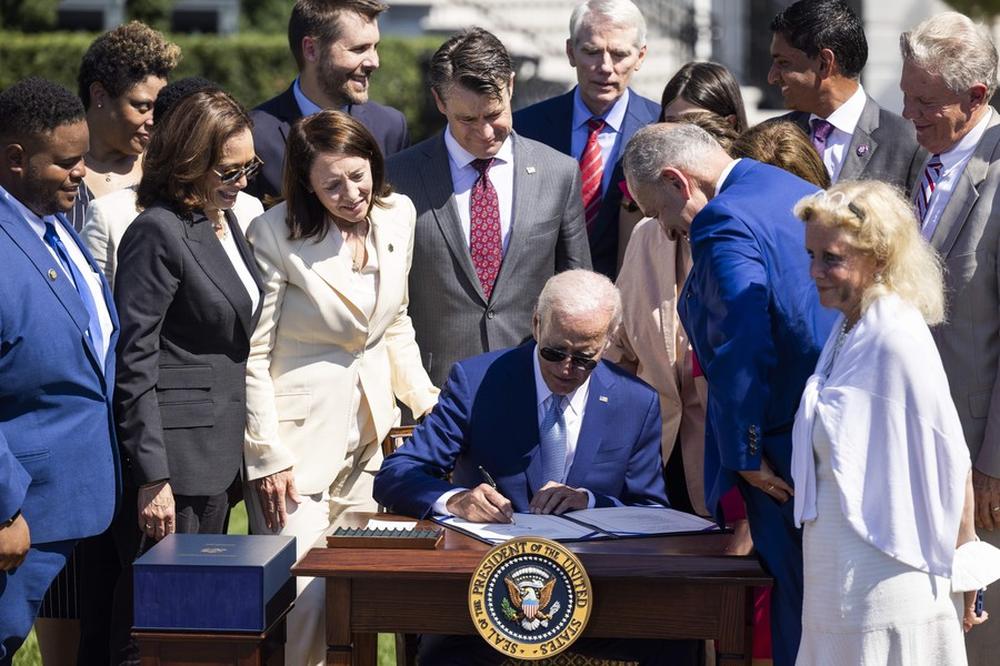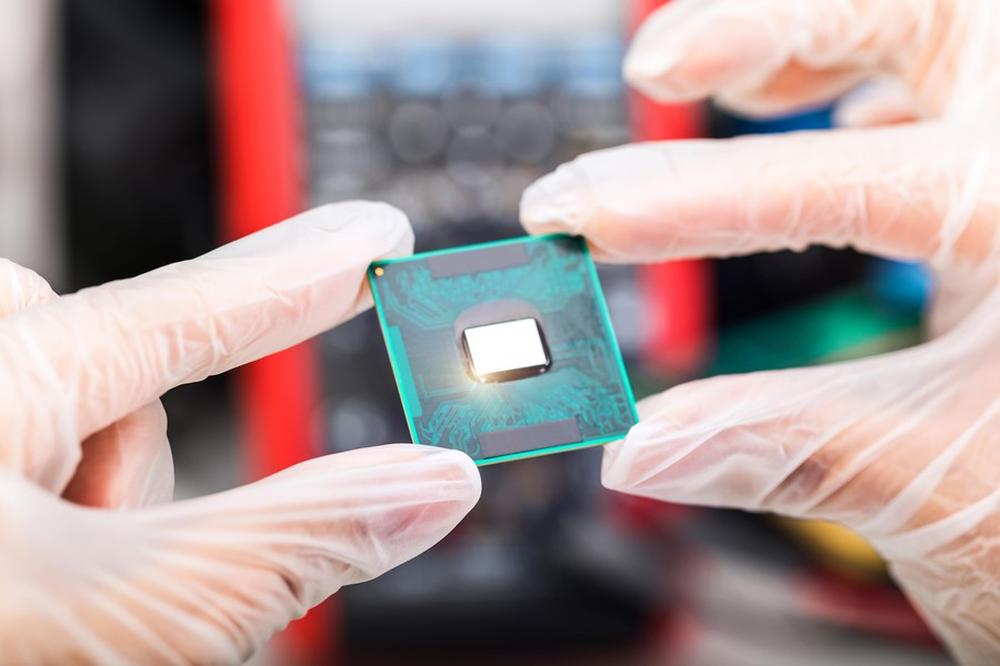- #China-US Competition
- #Economy & Trade
- #Technology & Cybersecurity
- #US Foreign Policy

► U.S.-China strategic competition displays unique features compared to previous cases of hegemonic competition. The U.S. and China have waged strategic competition across a wide range of domains, from science and technology to high-tech industries and military and security, with maintaining a high degree of interdependence.
►The CHIPS and Science Act and CHIP4 are two sides of the same coin in America's semiconductor strategy. The U.S. aims to secure domestic semiconductor production capacity and enhance competitiveness by investing 280 billion dollars with the CHIPS and Science Act and pursuing global cooperation through CHIP4.
►The article explains what kind of stance Korea should take in response to the CHIP 4 alliance.
Main Features of U.S.-China Strategic Competition and Semiconductors
Cutting-edge technologies have emerged as the core of U.S.-China strategic competition. While 5G was the prelude to U.S.-China high-tech competition, semiconductors became a full-blown conflict. U.S.-China strategic competition displays unique features compared to previous cases of hegemonic competition. The U.S. and China have waged strategic competition across a wide range of domains, from science and technology to high-tech industries and military and security, with maintaining a high degree of interdependence. Given that interdependence can potentially be weaponized in international politics in the 21st century, the U.S. and China perceive each other as an “existential threat.” The high-tech competition strategies pursued by the U.S. and China focus on addressing vulnerabilities, upgrading innovation ecosystems, and keeping each other in check.
The semiconductor supply chain has a “highly globalized yet regionally concentrated” structure, which defines the nature of the U.S.-China competition. The U.S. government’s semiconductor strategy is based on the awareness of the dire reality that despite its competitive edge in the areas of design and equipment in the semiconductor supply chain, U.S. semiconductor production is highly dependent on Asian countries. The U.S., which has engaged in strategic competition, takes measures to address the vulnerability of semiconductor supply chains through international cooperation with “trustworthy allies and partners” such as Korea, Taiwan, and Japan. This approach is a shortcut to addressing America’s vulnerability and can make it easier to keep China in check.
The CHIPS and Science Act & CHIP4: America’s Two-Track Strategy
The CHIPS and Science Act and CHIP4 are two sides of the same coin in America's semiconductor strategy. The U.S. aims to secure domestic semiconductor production capacity and enhance competitiveness by investing 280 billion dollars with the CHIPS and Science Act and pursuing global cooperation through CHIP4. When the CHIPS and Science Act and CHIP4 are properly combined to create synergy, the U.S. can maximize the effectiveness of its semiconductor strategy. By combining these two strategies, the U.S. plans to rapidly expand its domestic production capacity by 2027 to meet domestic demand in the most sensitive areas and to pursue various other goals, such as restructuring the innovation ecosystem in the mid-to-long-term to maintain or expand the technology gap with China and counter China’s illegal technological theft and unfair practices.
The U.S. attempts to form CHIP4 with Korea, Taiwan, and Japan because these countries can substantially contribute to achieving U.S. strategic goals. U.S. semiconductor strategy does include the policy goal of keeping China in check. Given that these four countries account for 91% of design and production, 73% of equipment, and 87% of the foundry in the global semiconductor market, the symbolic power of the U.S. aiming to cooperate with them cannot be ignored. However, it is important to keep in mind that the U.S. aims to achieve its goals through dynamic change rather than the indiscriminate containment of China pursued by the Trump administration. The meaning of dynamic change is captured by the transition to the “small yard, high fence” strategy through which the U.S. has narrowed the scope of checks on China but has built higher barriers in key areas. The result of this dynamic response to maintain the technology gap with China was that the U.S. adjusted its limit on new investment in Chinese semiconductor processes from 7 nm or less to below 28 nm.
However, the interdependence between the U.S. and China also influences the semiconductor industry. The U.S. has no choice but to reflect its economic interests in the semiconductor industry, which is expected to exceed 1 trillion dollars by 2030. This is because while still striving to maintain and expand the technology gap with China in the mid-to-long term, the U.S. cannot ignore the demands of American semiconductor companies that cannot give up access to the Chinese market. Economic interests directly influence domestic politics. Diverse and oftentimes conflicting goals, such as increasing manufacturing capacity, improving innovation capabilities, keeping China in check, and creating quality jobs, all appeared in the Biden Administration's 100-Day Supply Chain Review titled “Building Resilient Supply Chains, Revitalizing American Manufacturing, and Fostering Broad-Based Growth.” U.S. semiconductor strategy is also an outcome of compromise based on coordinating various goals. However, in the process of reaching a compromise, the U.S. exposes policy inconsistencies sometimes due to excessive securitization and sometimes due to excessive politicization.
Korea’s Strategic Responses
Amid intensifying U.S.-China semiconductor strategic competition, what strategy should Korea pursue? First, Korea needs to set the basis of its response strategy as “proper securitization.” We have already witnessed the dangers of over- and under-securitization in the fierce debate over whether Korea should join CHIP4. One side describes CHIP4 as America’s semiconductor “pivot to Asia,” arguing that Korea has no choice but to align with US strategy. The other side underestimates CHIP4 by arguing that the U.S. just seeks cooperation on practical issues, such as expanding manufacturing capacity, diversification, R&D cooperation, and human resource exchange, but has neither the intention nor the ability to form a semiconductor alliance. In the current situation of increased uncertainty, the risk of over-securitization and under-securitization is even greater. Over-securitization could threaten the foundation of prosperity, and under-securitization could threaten the foundation of peace. Korea must pursue synergistic connections between economy and security while maintaining a basis of proper securitization.
Second, Korea could respond to the issue of choosing between the U.S. and China with flexibility and resilience by pursuing a response strategy based on universality. As demonstrated by the debate surrounding CHIP4, it is risky to equate cooperation with the U.S. with the exclusion or isolation of China. Pulling from national wisdom to design a system to ensure CHIP4 enhances the resiliency of semiconductor supply chains and developing a system aimed at the universality of inclusive cooperation is more important than whether or not Korea joins CHIP4.
Third, Korea should understand the complexity of America's international cooperation strategy. It is undeniable that international cooperation has become more important for the semiconductor strategy of the Biden administration compared to the Trump administration. However, the Biden administration is not pursuing cooperation simply for the sake of it. The U.S. is targeting countries that can contribute to strengthening the innovation capacity of the U.S. semiconductor industry and to achieving the strategic goal of a technology gap with China. In this sense, Korea should take advantage of the situation to upgrade Korea-U.S. cooperation to maintain a technology gap with China.
Fourth, Korea should pursue a complex strategy that considers the need to compete with and cooperate with Taiwan. Although Korea and Taiwan are each responsible for one area of cooperation with the U.S., bilaterally, the two countries are in competition. Since America's semiconductor strategy has a discriminatory effect on Korea and Taiwan, competition between the two countries could intensify. Korea should secure a competitive advantage over Taiwan in the process of cooperating for U.S. reshoring, while striving to find points of cooperation for systemic issues, such as supply chain stability.
Seungjoo LEE is a professor of political science and international relations at Chung-Ang University (Seoul, Korea) and the Chair of Trade, Technology, and Transformation Research Center at East Asia Institute. He currently serves as Chair of the Advisory Committee on Economic Security and Foreign Affairs, Ministry of Foreign Affairs. Professor Lee has previously taught at the National University of Singapore and Yonsei University. He has also held various positions in academic associations in Korea such as the Korean Political Science Association and the Korean Association of International Studies. Professor Lee is the co-author of The Political Economy of Change and Continuity in Korea: Twenty Years after the Crisis. He also edited Northeast Asia: Ripe for Integration?, International Political Economy in Cyberspace, Korea’s Middle Power Diplomacy, International Politics of Belt and Road, and Trade Policy in the Asia-Pacific. His publications appeared in various journals such as Comparative Political Studies, The Pacific Review, Asian Survey, and Korean Political Science Review. His current research focuses on the economy-security nexus, the U.S.-China technology competition, and global digital governance. Professor Lee received his Ph.D. in political science from the University of California at Berkeley.

